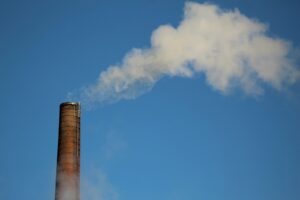Cremation carbon footprint reveals death’s climate cost
The annual European Cremation Network conference was held in the UK for the first time this year. Among other things, major players in the sector are turning attention to the climate crisis and a seemingly-impossible task.
Attracting some of the biggest companies in the funerals industry, this year’s event was hosted by Pure Cremation founders Bryan and Catherine Powell. Delegates from France, Belgium, Sweden, Finland, Germany, Belgium and Italy were among those in attendance, and environmental impact was high on the agenda.
The urgent need to begin measuring footprints, a step many sectors are only just waking up to, was among the presentations. Meanwhile, a reduction in the use of fuel was cited as the most effective approach to tackling overall impact. Other ideas, including increasing the number of cremations per shift – the initial heating of the cremation chamber uses the most energy – and redistributing excess heat to nearby homes and offices, were also discussed.
‘Pure Cremation has just completed its third independent assessment via Carbon Footprint Ltd, and we are delighted to see that our CO2e (carbon dioxide equivalent) per cremation has fallen 16.3% year on year. Better still, our CO2e per £1m turnover has more than halved, thanks to constantly striving for efficiency, supported by the sensible application of technology,’ said Catherine Powell. We are proving that you can deliver quality care at a sensible price without costing the earth.’
Despite this positive news, the cremation sector faces huge challenges as net zero and economic decarbonisation gathers pace. The average UK crematorium emits between 160 and 190kg of CO2 for every individual cremation. As per Pure Cremation’s own analysis, this is around the same as driving a standard sized car 470miles. Harmful particulates and toxins are also often produced in the process.
However, it’s important to note that burials also come with an environmental price tag. The production of embalming fluid, coffins and linings, headstones, travel to and from the service and disturbance of earth all contribute to a frequently overlooked footprint. The fact that no in-depth research exists to quantify this speaks volumes about just how far the industry has to go right now.
More on carbon footprints and accounting:
Now the season is done, Premier League emissions can really kick off
After greenwashing: A guide to effective environmental and offsetting targets
Image: The Good Funeral Guide















